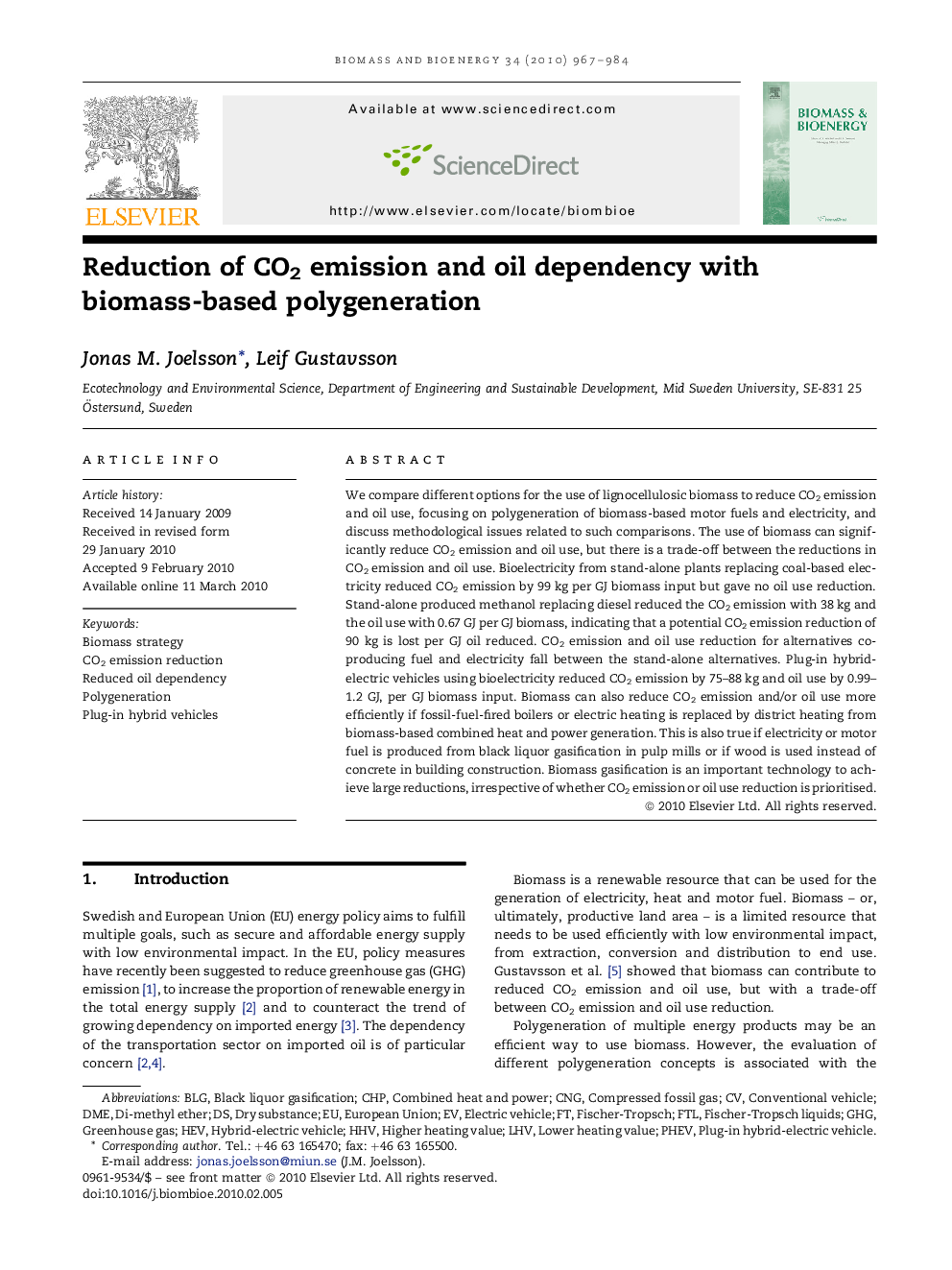| Article ID | Journal | Published Year | Pages | File Type |
|---|---|---|---|---|
| 678256 | Biomass and Bioenergy | 2010 | 18 Pages |
We compare different options for the use of lignocellulosic biomass to reduce CO2 emission and oil use, focusing on polygeneration of biomass-based motor fuels and electricity, and discuss methodological issues related to such comparisons. The use of biomass can significantly reduce CO2 emission and oil use, but there is a trade-off between the reductions in CO2 emission and oil use. Bioelectricity from stand-alone plants replacing coal-based electricity reduced CO2 emission by 99 kg per GJ biomass input but gave no oil use reduction. Stand-alone produced methanol replacing diesel reduced the CO2 emission with 38 kg and the oil use with 0.67 GJ per GJ biomass, indicating that a potential CO2 emission reduction of 90 kg is lost per GJ oil reduced. CO2 emission and oil use reduction for alternatives co-producing fuel and electricity fall between the stand-alone alternatives. Plug-in hybrid-electric vehicles using bioelectricity reduced CO2 emission by 75–88 kg and oil use by 0.99–1.2 GJ, per GJ biomass input. Biomass can also reduce CO2 emission and/or oil use more efficiently if fossil-fuel-fired boilers or electric heating is replaced by district heating from biomass-based combined heat and power generation. This is also true if electricity or motor fuel is produced from black liquor gasification in pulp mills or if wood is used instead of concrete in building construction. Biomass gasification is an important technology to achieve large reductions, irrespective of whether CO2 emission or oil use reduction is prioritised.
